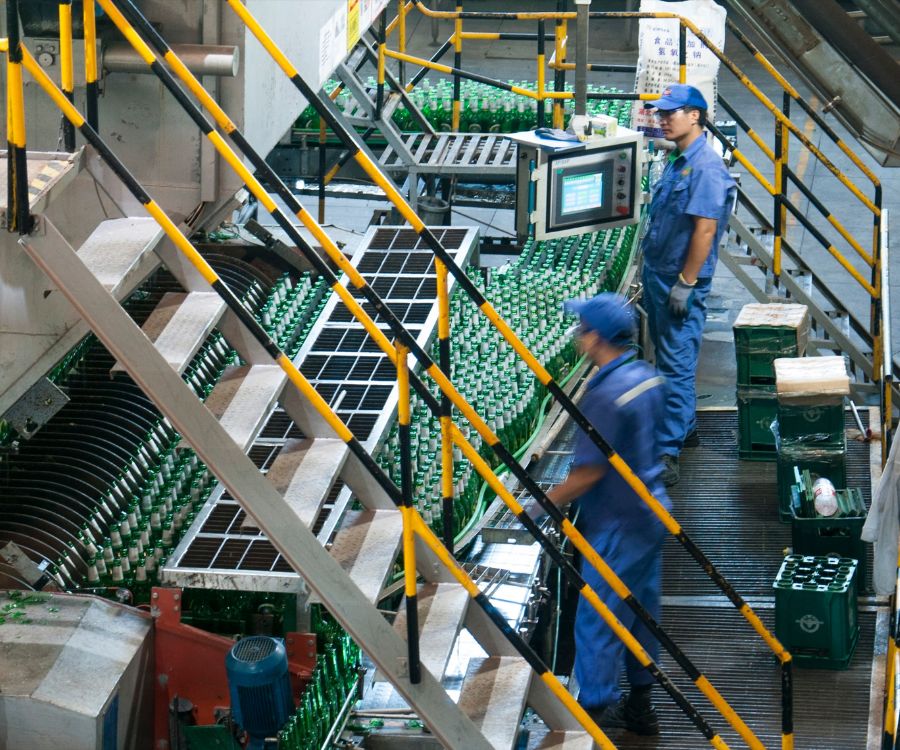Energy is one of the highest costs of doing business, and one of the biggest environmental contributors.
By conducting an in-depth review of how your business uses energy, you’re likely to discover that there are several key ways in which you can improve energy efficiency and optimize significant savings.
Even quick, small adjustments can lead to substantial reductions in your energy bills. Plus, saving energy will also help your business adopt a more sustainable approach.
In this blog, we provide 3 energy efficiency tips specifically for manufacturers.
1. Evaluate your energy costs
To understand how you use the electricity that you consume, first start with an energy audit.
The review will identify peak consumption times and give you some information to develop your energy management strategy.
Use this audit as a basis to begin designing your energy-saving plan.
2. Maximise your use of energy
Your energy audit will show you how and when you use the most energy.
If possible, stagger your production to reduce peak usage and minimize demand charges.
Schedule time equipment changeovers and employ power control devices.
Set computers to hibernate after periods of inactivity or when they are not scheduled to be in use.
Stagger equipment startups to reduce the peak load drawn on the production floor after a planned shutdown.
Don’t forget to turn off the lights
This is one of the simplest things that you can do right away! Add automated timers so that rooms are lit, and machines operate only when they are in use.
For areas that are not continuously occupied, install motion sensors so that lights or equipment only turn on when needed.
For appliances that aren’t in constant use, unplug them as they continue to draw small amounts of energy when plugged in, even while not in use.
Clean and maintain your equipment
Incorporate equipment cleaning and maintenance on an optimal schedule.
Cycle maintenance to spread your peak usage, lower your demand, and keep your machines efficiently running so that they require less energy and last longer.
3. Upgrade To Green Technology
Consider your HVAC systems
The heating and cooling of buildings is typically the most costly undertaking of any business, often 20-40% of monthly energy usage. Making minor adjustments can yield a huge difference.
Use a programmable thermostat to regulate the temperature and adjust the stable temperature even one degree above or below what you typically set it.
Consider investing in insulation so that your facilities better retain heat or cold.
Moreover, consider updating your systems. Newer systems are more efficient, and will soon pay for themselves in energy savings.
Replace Old Lightbulbs
Replace your old fluorescent or incandescent lighting fixtures with LED bulbs and lamps. LED bulbs use about 25% of the energy required of a standard lightbulb. Additionally, they tend to last five to ten times, even 50 times longer than a regular bulb.
Retrofitting these new bulbs into existing fixtures will save money and allow for the conversion to be completed quickly, with virtually no downtime.
Upgrade to Greener Machinery
Since equipment use consumes a lot of energy, operating the most efficient machinery will translate into energy savings.
Look for Energy Star (or similar) rated appliances that can accomplish more than your current machinery using less power.
Over time, these upgrades pay for themselves with the reductions in demand and energy required to operate.
Switching to Renewables
Renewable energy sources, like wind or solar power, can save you quite a bit over time.
Consider investing in solar generating equipment, perhaps by installing solar panels on the roof of your facility.
Switching to solar power will instantly reduce your peak demand, saving you money on your standard utility bill. If you are able to generate more energy than you use, you can often sell it back to your local utility at a profit. Together, these savings make the conversion process quite attractive and significantly reduce the initial barriers that most businesses encounter as they consider alternative energy sources.
Why consider Energy Efficiency?
Ultimately, adopting an energy savings approach is not only great from a sustainability perspective but is also excellent for your bottom line.
Understanding how and where the power that you use is spent helps you to reign in production costs and remain competitive.
As one of the most significant expenses, this can make or break your budget.
Our environmental experts can help you become more energy efficient. We can help you evaluate your current usage and pinpoint ways that you may be able to save money by adopting a more sustainable approach.


